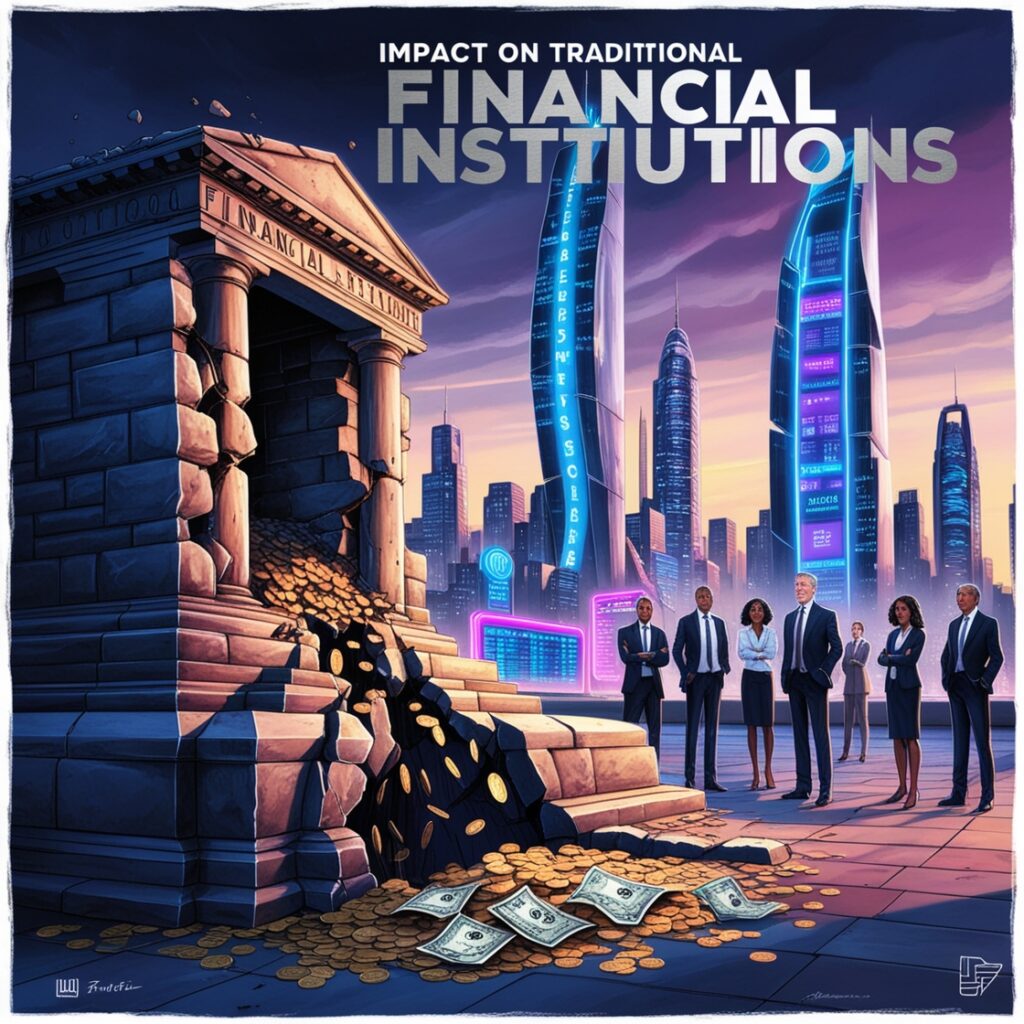1. Introduction
Blockchain technology, originally introduced as the underlying framework for Bitcoin, has grown into one of the most revolutionary technologies in recent years. Its decentralized, secure, and transparent nature is now disrupting various sectors, particularly the financial industry. This article will explore how blockchain is transforming finance, reshaping everything from banking to asset management.
2. Evolution of Blockchain Technology
Early Development and Usage
Blockchain emerged in 2008 with the publication of Bitcoin’s white paper by an unknown person or group named Satoshi Nakamoto. Initially, its primary function was as a digital ledger for Bitcoin transactions. Over time, blockchain’s potential expanded beyond cryptocurrencies.
Key Milestones in Blockchain History
Key moments include the rise of Ethereum in 2015, which introduced smart contracts, and the development of decentralized finance (DeFi) platforms. These advances have positioned blockchain as a disruptive force in the financial sector.

3. Blockchain Basics
How Blockchain Works
At its core, blockchain is a decentralized ledger system that records transactions across multiple computers. It is highly secure due to cryptographic algorithms and its immutability, meaning once data is entered, it cannot be changed without consensus from the entire network.
Blockchain vs. Traditional Databases
Unlike traditional databases managed by a central authority, blockchain operates in a decentralized manner. This eliminates the need for intermediaries and reduces the chances of fraud.
4. Role of Cryptocurrencies
Bitcoin as a Case Study
Bitcoin, the first cryptocurrency, demonstrated blockchain’s capability to operate without a central bank. Its adoption has grown as a store of value and, increasingly, as a payment method.
Altcoins and Their Role in Finance
Other cryptocurrencies, such as Ethereum, Ripple, and Litecoin, play significant roles in different financial applications. Ethereum’s smart contract capabilities have enabled decentralized apps and finance solutions.

5. Decentralized Finance (DeFi)
Definition and Importance
DeFi refers to financial systems built on blockchain that bypass traditional intermediaries like banks. It allows for peer-to-peer financial transactions, lending, borrowing, and trading without centralized control.
Popular DeFi Platforms
Platforms like Uniswap, Aave, and Compound have surged in popularity due to their user-driven, open, and permissionless nature.
6. Smart Contracts
What are Smart Contracts?
Smart contracts are self-executing contracts with terms directly written into code. These contracts automatically enforce the terms of agreements without needing third parties.
Use Cases of Smart Contracts in Finance
From automated loan approvals to insurance claims, smart contracts are revolutionizing how businesses operate within the financial ecosystem.

7. Blockchain in Banking and Payments
How Blockchain is Redefining Payments
Blockchain reduces transaction costs by cutting out intermediaries. Traditional payment systems can take days to settle cross-border payments, while blockchain achieves this in minutes or even seconds.
Cross-border Transactions
Blockchain’s decentralized nature is particularly advantageous in cross-border payments, where banks and currency exchange fees often make transactions expensive and slow.
8. Transparency and Security
Enhanced Security with Blockchain
Blockchain offers unparalleled security through encryption and distributed ledger technology, which ensures that transactions are safe from tampering or hacking.
Blockchain’s Role in Fighting Fraud
By providing a clear, immutable record of transactions, blockchain makes it easier to detect and prevent fraudulent activities.

9. Challenges to Adoption
Legal and Regulatory Hurdles
Despite its potential, blockchain faces significant regulatory challenges. Different jurisdictions have varying rules regarding cryptocurrencies and blockchain use, creating a fragmented legal environment.
Technical Barriers to Blockchain Integration
The complexity of integrating blockchain into existing financial systems is another obstacle. Issues such as scalability, speed, and interoperability still need solutions for broader adoption.
10. Impact on Traditional Financial Institutions
Threats to Banks and Financial Intermediaries
Blockchain’s decentralized nature poses a direct challenge to banks and other intermediaries that have traditionally controlled financial systems.
Banks Adopting Blockchain Technology
While blockchain threatens traditional institutions, some banks are beginning to adopt blockchain for its efficiency and cost-saving benefits, especially in payment systems and record-keeping.

11. Blockchain and Investment
Initial Coin Offerings (ICOs)
ICOs allow companies to raise capital by issuing tokens on the blockchain, similar to how companies issue stock. This method has gained popularity due to its ease and global reach.
Tokenization of Assets
Blockchain enables the tokenization of real-world assets like real estate and art, allowing them to be divided into digital shares, improving liquidity and access.
12. Blockchain in Financial Inclusion
Serving the Unbanked Population
Blockchain has the potential to provide banking services to the unbanked population, especially in developing regions where traditional banking infrastructure is lacking.
Reducing Remittance Costs
For migrant workers, blockchain can reduce the high fees associated with remittances, allowing them to send money home more efficiently and affordably.

13. Blockchain for Supply Chain Finance
Streamlining Supply Chains
Blockchain ensures transparency and accountability in supply chains by providing real-time visibility of transactions, enhancing trust between parties.
Real-time Auditing and Data Integrity
Through blockchain, companies can perform real-time audits, ensuring data integrity and preventing fraud in the supply chain process.
14. Expert Insights on Blockchain
Interviews with Industry Leaders
Experts in the blockchain space predict that as regulatory frameworks improve, blockchain will become an integral part of global finance. Industry leaders from firms like JP Morgan and IBM are already exploring blockchain applications.
Impact of Blockchain on Financial Careers
Blockchain is opening up new career paths in financial technology, with roles like blockchain developers and smart contract auditors growing in demand.

15. Future of Blockchain in Finance
Emerging Trends
The rise of Central Bank Digital Currencies (CBDCs) is one of the most significant trends, as countries explore how blockchain can revolutionize national currencies.
Blockchain in Central Bank Digital Currencies (CBDCs)
CBDCs are digital versions of fiat currencies, backed by central banks, leveraging blockchain technology to enhance security and efficiency.
16. Case Studies
Real-world Blockchain Applications in Finance
Companies like Ripple are revolutionizing international payments, while Ethereum is enabling DeFi applications that democratize access to financial services.
Key Examples from Leading Companies
IBM’s partnership with Maersk to streamline global trade and JP Morgan’s blockchain-based payment network illustrate how established institutions are harnessing blockchain.

17. The Future Outlook of DeFi
Future Developments in Decentralized Finance
As DeFi continues to evolve, innovations such as decentralized insurance and prediction markets are expected to gain traction.
Institutional Adoption of DeFi
Major financial institutions are showing increasing interest in DeFi, indicating a future where decentralized solutions become mainstream.
18. Conclusion
Blockchain technology is rapidly disrupting finance, from banking and payments to investment and financial inclusion. Its decentralized, transparent, and secure nature offers transformative benefits but also poses significant challenges. As blockchain continues to mature, it’s potential
The Reality Engineering Code That Will Bring Your Desires To Life


